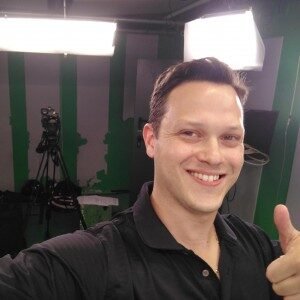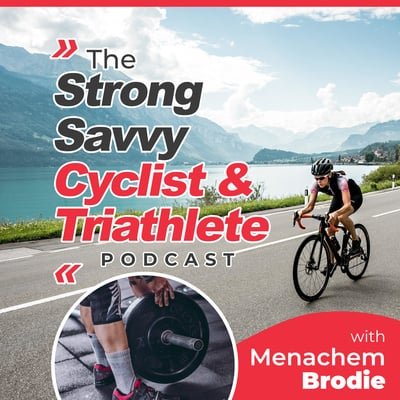In Part 2 we continue the conversation with world-renowned back & spine expert Dr. McGill. In this episode we go a bit more into the weeds and talk more specifics for cyclists, who are suffering from back pain, how they can avoid it, as well as why and how one needs to “Be an athlete 24/7”.
Make sure to listen to Part 1: SSCT Podcast Episode 8- Dr. Stuart McGill on Back Pain in Cyclists.
Coach Brodie is the first, and only, McGill Method Certified Practitioner who is also a certified & highly experienced cycling coach, triathlon coach, and strength coach who specializes in working with cyclists & triathletes.
Are you suffering from back pain, and just can’t seem to get the right answers (or any answers at all)?
Contact Coach Brodie today to get on track to getting out of pain, and back to what you love to do!
In this Episode:
- Introduction
- Micromovements
- Corrective Exercise
- Myths for Cyclists
- Strength Training Approaches for Cyclists and Triathletes
- Coaching
- Key Points for Cyclists and Triathletes to Express Athleticism
- Conclusion
Show Notes:
0:43 –
Introduction
- Video on HV Training YouTube channel
- You can see Dr. McGill’s models there
- Book recommendation for coaches: “How to Lie With Statistics”
- Importance of reading research articles
- Most advanced and up to date programming on TrainingPeaks University
- Cycling version: Strength Training for Cycling Success
- Triathlon version: Strength Training for Triathlon Success
- Two very different programs
4:34 –
Micromovements
- Typical issue with cyclists
- As soon as you damage an endplate or get a little bit of a disc bulge it changes the mechanics of the joint
- Very rarely do you find a cyclist whose primary concern and first injury is to the facet joints
- It almost always starts out as a bad disc and then later on the facet joints ;22become the primary – which forms the cascade
- We try to stiffen the laxity – not mobilize it – and once it’s stiffened it responds to the joints above and below
7:34 –
Corrective Exercise
- Recreational cyclists typically have a kyphotic head position where they lose range of motion and the shoulder joint is out of position
- Cyclists need healthy range of motion and strength endurance for the upper back too
- “Corrective exercise is to combat chronic stresses caused by the sport”- Dr. McGill
- It would be beneficial to do some thoracic extension work for cyclists to restack the spine and fix posture
9:22 –
Myths for Cyclists
- Dr. McGill them the clipboard to write down what they need (in terms of athletic variables) to be the very best in their sport
- After he asks what the weakest part of their athletic game is
- “I think they’d be very wise to spend more time in self-analysis – what is the weakest part of my game?” – Dr. McGill
- “If an athlete struggles to answer that – they have nothing to guide their training – you have to know what you’re training!” – Dr. McGill
- Cyclist culture doesn’t help with finding this answer
- Graded exposure – not in a crude way
- Practice good spine hygiene throughout the day and get you back on the bike
- Set up the bike to fit the athlete and minimize stress concentrations
- Audit body response from limited bi-daily exposure
- “Don’t get greedy” – Dr. McGill
- Let your body adapt
16:50 –
Strength Training Approaches for Cyclists and Triathletes
- It depends!
- Stiffer core for cyclists
- Program in cycles – don’t overtrain
- Train the body to be a tuned machine
- You want an interplay between strength, stiffness, mobility, elasticity, endurance, etc.
- Be an athlete 24/7
- Eat well
- Treat your body well and practice movement hygiene throughout the day
- It will lead to a bigger training capacity
- Good technique in the weight room
- Limit the volume
19:59 –
Coaching
- So much misinformation and people speaking in definites
- Decide what suits your personality (as a coach)
- “Coaches are innately very perceptive and they know how to treat athlete A differently from athlete B” – Dr. McGill
- They also recognize the uniqueness and differences in anatomy, mechanics, architecture, physiology, etc. of each athlete
- Understand your strengths and weaknesses
- It’s very much an art and a science
- Look at the variance within a research paper, not just the average results
- Variance = key
- “People choose science to make a point that is convenient rather than truthful – it always comes back to it depends and some people are uncomfortable with that answer” – Dr. McGill
- Nothing else matters except if the athlete can produce the force, tension, and stiffness at the right time to be able to execute the sport
- Combines
- The record holder very rarely even make the teams
- What’s the content validity of some of those tests?
- The record holder very rarely even make the teams
30:37 –
Key Points for Cyclists and Triathletes to Express Athleticism
- Keep working on developing knowledge of how the body works
- “You must have proximal stability to unleash distal mobility” – Dr. McGill
- You must generate force and transmit it through the linkage
32:58 –
Conclusion
- It depends!
- Formulate an idea of what’s going on and then slowly move in that direction
- Micro-adjusting
- Where can you find Dr. McGill?
- Backfitpro.com
- Back Fit Pro on social media
- Seminars











